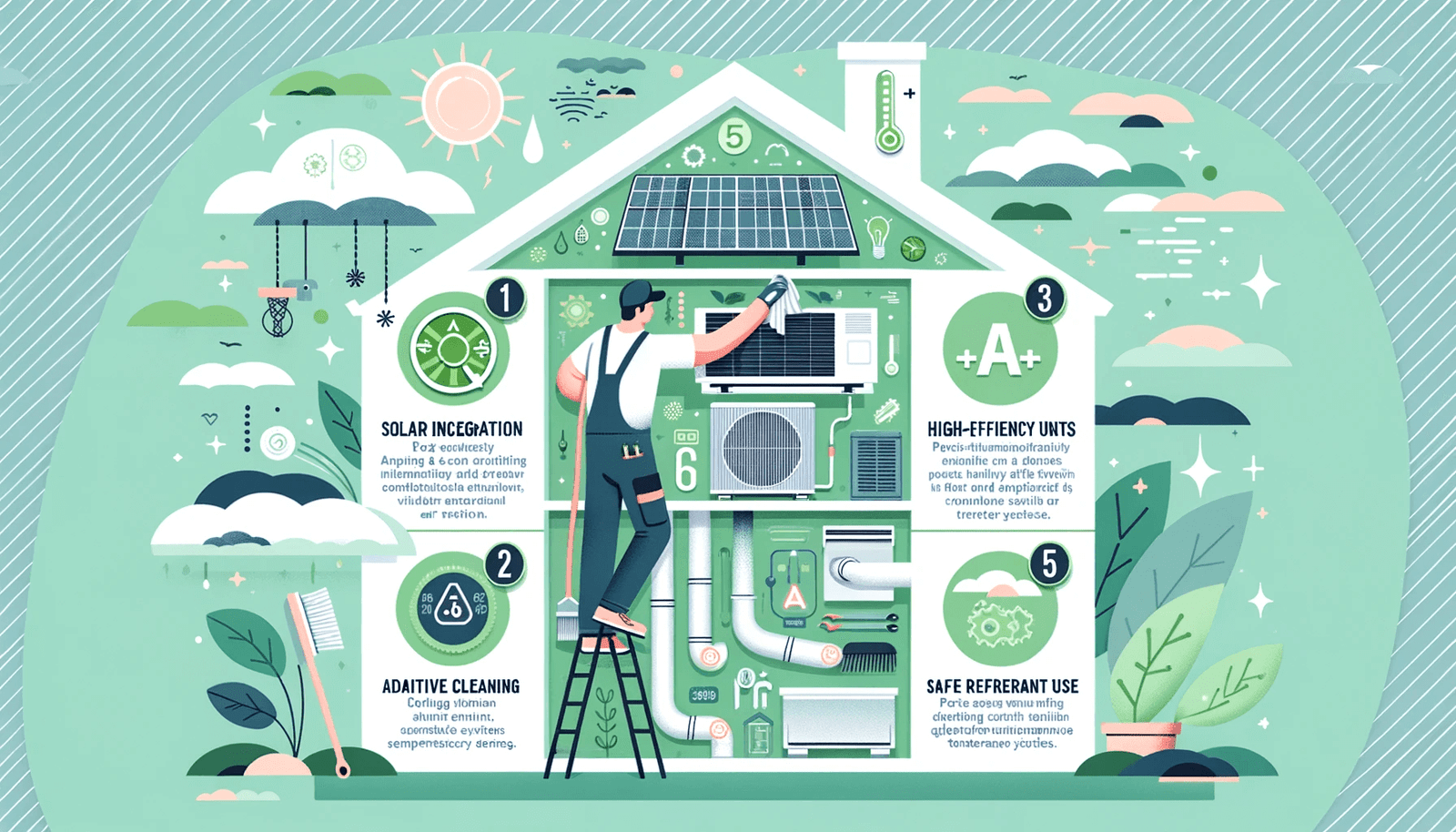Business
How Do I Lower HVAC Carbon Emissions
HVAC Carbon

Carbon footprints are of paramount importance to companies in all sectors as environmental awareness rises. Greenhouse gas emissions are mostly the result of the energy used to heat, cool and ventilate commercial buildings. A sustainable future depends on lowering the carbon footprint of a business building’s HVAC system. https://www.socool.sg/ can help you in lowering carbon footprint by upgrading your AC.
The use of effective techniques can dramatically reduce emissions and energy consumption. To reduce environmental effect, investigate renewable energy sources like solar or geothermal systems. Businesses may set the standard for a future that is greener and more environmentally friendly by adopting these actions. This article will discuss efficient methods for decreasing your commercial building’s HVAC system’s carbon footprint and paving the path for a more environmentally friendly and sustainable tomorrow.
AC and heating units that saves energy:
An essential first step in cutting carbon emissions is upgrading to more efficient heating, ventilation and air conditioning systems. Energy efficiency can be greatly improved by upgrading to a system that makes use of cutting-edge technology like variable refrigerants (VRF) structures, high-efficiency heat pumps and geothermal heat pumps. The energy used for heating and cooling can be significantly reduced because of the efficiency of these systems. https://www.socool.sg/mitshubishi-aircon/ can upgrade your AC to eco-friendly as they have extensive knowledge.
Controls and automation:
Integrating building automation systems and smart HVAC controls can improve the power management of commercial buildings. The security, lighting, and HVAC systems can all be controlled centrally thanks to these cutting-edge technologies. Based on occupancy and environmental parameters, energy usage can be optimized with the use of sensors, data analysis, and intelligent algorithms. As a result, there are notable increases in energy efficiency, increased comfort, and a less environmental impact.
Pick the most reliable power plant:
Monitoring the generator and energy source of a building is essential to lowering its carbon footprint. Thermal solar systems are environmentally friendly, while oil and gas burners produce a lot of carbon dioxide. Since they use renewable energy sources rather than fossil fuels, heat pumps—which draw heat from the earth or air—offer a possible substitute. We can greatly reduce carbon emissions and enhance sustainability in the building sector by choosing greener energy options.
Adjust the temperature on the thermostat:
Reducing the temperature by just one or two degrees won’t have much of an effect on comfort, yet it is going to have a big effect on greenhouse gas production. A drop of just one degree can save 300 kilograms of carbon dioxide in the atmosphere. As a bonus, it will reduce your monthly energy costs by roughly 10%. To enhance the effectiveness of the HVAC system with minimal effort on the part of the user, some thermostats may be set to automatically adjust or to monitor occupancy behavior.
Make sure the insulation is adequate:
The amount of insulation a building has can have a significant impact on how well it retains heat. Less energy will be used by the HVAC system for cooling or heating the building if the roof, walls, floors, basement and attic are all well insulated. The heating system may be used less frequently in the winter because more heat is retained inside, and the air conditioning system can be used less frequently in the summer because more heat is kept outside.
Plan for routine upkeep:
Unfortunately, HVAC systems are generally forgotten about until they break down. However, they require routine servicing to ensure they function properly and air quality is maintained. Replacing the air filters is a necessary part of the upkeep. Clogged ones prevent proper airflow, making the HVAC system work harder to maintain the desired temperature. As a result, more energy will be used, leading to additional greenhouse gas emissions.
Table of Contents
-

 Tech1 year ago
Tech1 year agoHow to Use a Temporary Number for WhatsApp
-

 Business2 years ago
Business2 years agoSepatuindonesia.com | Best Online Store in Indonesia
-

 Social Media1 year ago
Social Media1 year agoThe Best Methods to Download TikTok Videos Using SnapTik
-

 Technology1 year ago
Technology1 year agoTop High Paying Affiliate Programs
-

 Tech10 months ago
Tech10 months agoUnderstanding thejavasea.me Leaks Aio-TLP: A Comprehensive Guide
-

 FOOD12 months ago
FOOD12 months agoHow to Identify Pure Desi Ghee? Ultimate Guidelines for Purchasing Authentic Ghee Online
-

 Instagram3 years ago
Instagram3 years agoFree Instagram Auto Follower Without Login
-

 Instagram3 years ago
Instagram3 years agoFree Instagram Follower Without Login




















